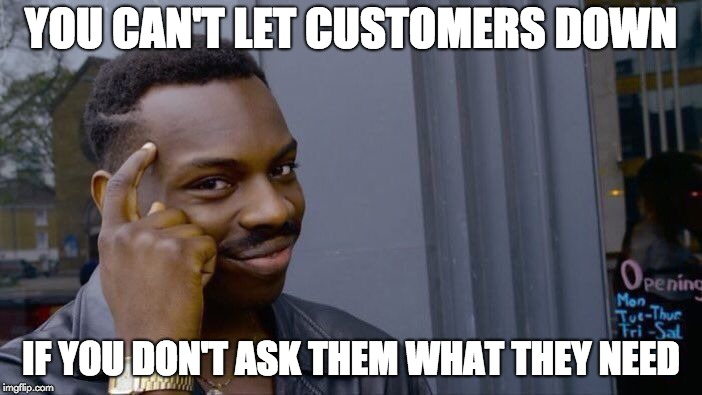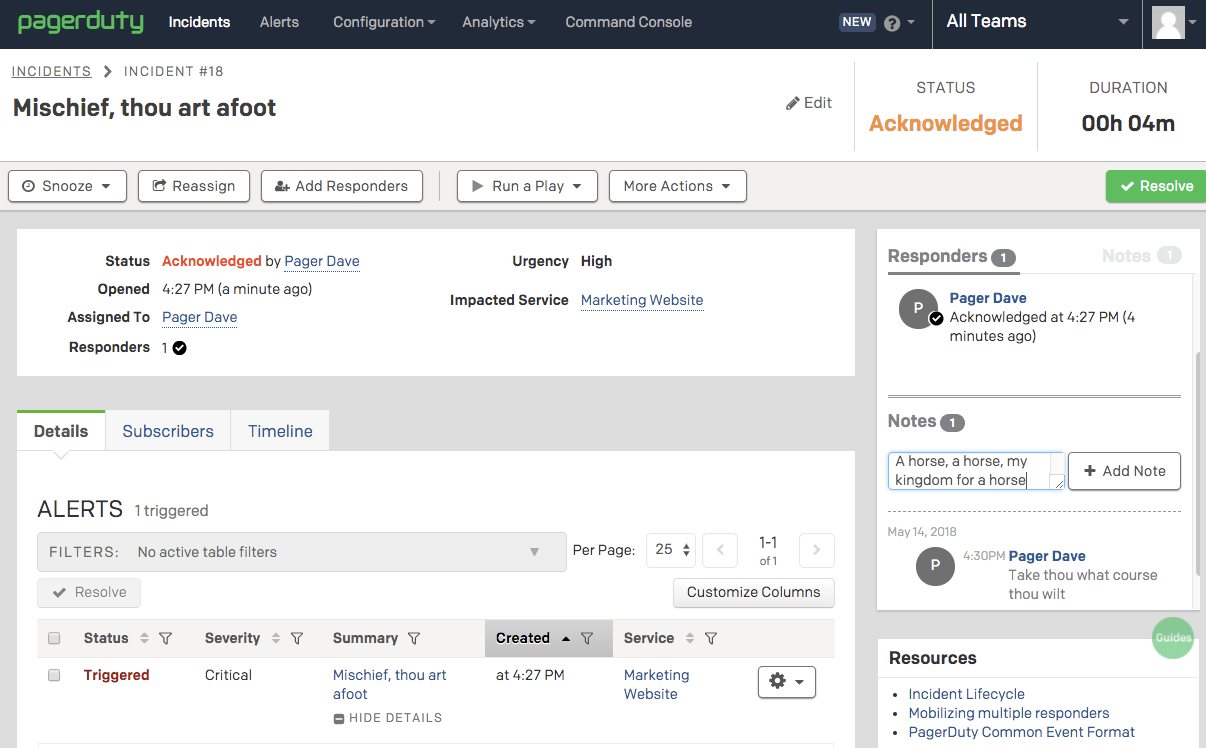Friends, Citizens, Marketers, Lend Me Your Ears
While Jay-Z taught me about bringing DevOps into Marketing, it was Shakespeare who really grounded me in the customer experience. I remember learning in school about how Shakespeare’s plays were lauded for two main reasons:
- He used a “less haughty repartee, more naughty wordplay” approach to his writing.
- He connected on an emotional level that was both relatable and honest, covering love, hate, jealousy, deceit. You know, #OldWorldProblems?
He knew his audience. It didn’t matter how eloquent he was, or whether he was an expert in wordplay or prose or storytelling; fundamentally, he knew his customer, and everything he did drew from that. “To thine audience be true” or something like that. (Note: If you don’t like someone butchering Shakespeare quotes, maybe skip to the end because this could get intense.)
To Be a PM, or Not to Be a PM
The discipline of Product Management has evolved out of a deep need to understand customers. Admittedly, I’m starting to feel my age as a PM, having been indoctrinated at Microsoft over 10 years ago after reading their internal “Art of Product Management” manifesto. Thanks to the fabulous “Mind the Product” conference, I’ve since learned that Product Management in tech has an even richer history, taking its cues from Toyota’s Lean Manufacturing and the term “Genchi Genbutsu” meaning “to go to the source to find the facts to make correct decisions.” In many ways, the role of Product Manager was invented within Engineering organizations to bring some knowledge of the customer there. (And I’ve spoken at length—well, for five minutes—about how Ops teams need to apply good PM skills to build a platform for developers to really succeed with DevOps.)
The more fascinating aspect (to me, at least) is that these Product Management skills are becoming more and more relevant to more and more people in your organization as time goes on. Why is that? “Therein lies the rub,” as that Shakespeare guy says. Consumers demand perfection, but teams face massive complexity. Here’s a concrete example from our “State of Digital Operations 2017” report:
- Demands: 81.2 percent of consumers wait less than one minute before abandoning an application.
- Complexity: 83.6 percent of organizations take more than 30 minutes to resolve customer-impacting incidents.
In case you didn’t notice, there’s a wee bit of a gap there. Or more poetically: “Now is the winter of our discontent.” Let’s unpack these two areas and see if we can come away with a silver lining.
Demands: The Customer Doth Protest Too Much, Methinks

OK, let’s say you’ve resolved to at least try to understand the needs of your customers. The traditional model of funneling all of that customer demand through your Sales and Support teams just won’t work. Everyone—from Engineering, to Marketing, to Finance—needs to own the customer experience: welcome to your digital business (digital operations FTW!). This is a top-to-bottom mental shift for many organizations, but it’s a critical part to a successful digital transformation. Scott Brinker, a brilliant thought leader in the Marketing domain, describes what the end result of this transformation looks like using the term “citizens“:
“Empowered by a plethora of marketing technologies … ordinary citizens of the marketing department have increasingly become do-it-yourself wizards in crafting digital interactions with customers.”
Before you cry “havoc” and let slip the dogs of war, it’d be nice to equip the citizens first. It’s the same DevOps principles for a full-service ownership culture, just a different underlying platform. The citizens of the Marketing department need a set of tools to help understand the customer experience, measure it, and improve it. Something like this is a great start. One word of advice: balance the qualitative with the quantitative. Absolutely look at how you can optimize your funnel, but also make sure you don’t neglect the detailed firsthand context that you need to hear directly from customers.
Complexity: All That Glitters Is Not Gold
One side effect of empowering individuals to solve their own problems in service of the customer is that complexity often increases. Take your marketing website for example: It’s no longer good enough to just host static content on a couple of web servers. Now you’re using SaaS products to capture leads from downloadable content, track user behavior and clicks for analytics, engage customers in real time using chat, and more. On top of that, each of those functions might actually be the responsibility of entirely separate individuals or teams (e.g., Product Marketing, Demand Generation, Growth, Customer Support, etc.).

In fact, Scott Brinker again does a great job of laying this out in his post on how microservices and APIs are impacting marketing. If you think the IT monitoring space is complex, take a look at the “MarTech 5000”—warning, this is not for the faint of heart! It’s intuitive to think that the way to combat the complexity is through tools consolidation, but that flies in the face of this whole architectural movement and its benefits.
A better approach isn’t consolidation, it’s integration. And from what we see with our customers, the necessary step before that is actually awareness. In particular, there are two aspects to awareness that will help you effectively manage the complexity:
- Organizational awareness. Use the DevOps principle of “sharing” to ensure that your team knows which tools you are using and how they impact the customer experience (add it to your organization’s “service catalog”—and if you don’t have a service catalog, start building one).
- Real-time awareness. You’ve got a dependency on this service, so you need to know that it’s available and functioning the way it’s supposed to be. Most reputable SaaS products offer a public status page for this very purpose.
The Better Part of Valor
The gap between demands and complexity may seem so large that you feel overwhelmed by your responsibilities. As Bill says: “Uneasy lies the head that wears the crown.” (He also says “Off with his head!” elsewhere, so be warned!)
The marketing landscape is changing rapidly because of the immense opportunity for innovatively solving customer problems. Marketers must adapt, leverage their domain knowledge, and apply a technology-centric mindset. MarketingOps can lead the charge in driving transformational change—and PagerDuty can help.
If you’d like to learn more, read through this resource and let’s have a conversation (preferably in iambic pentameter).


